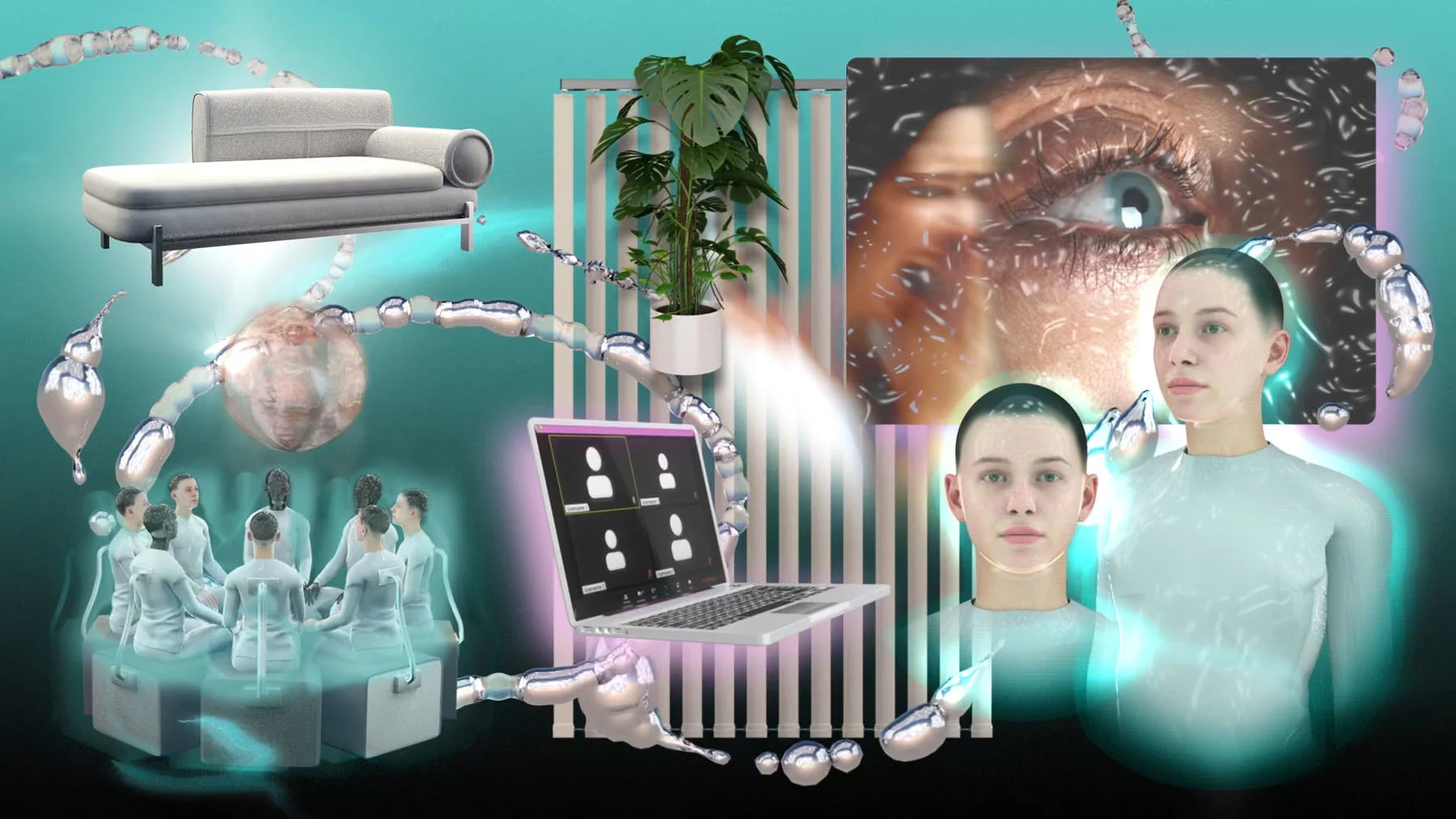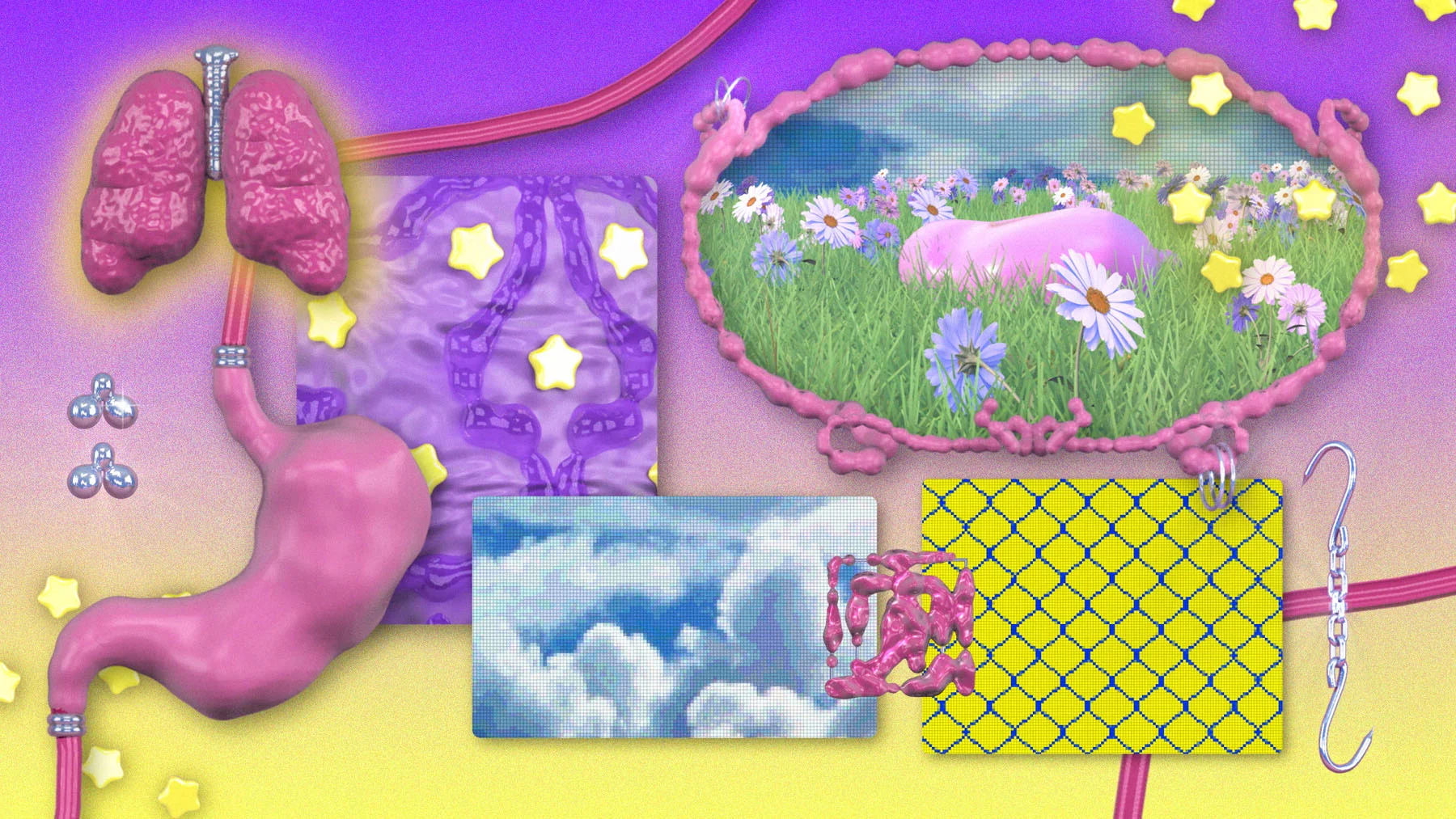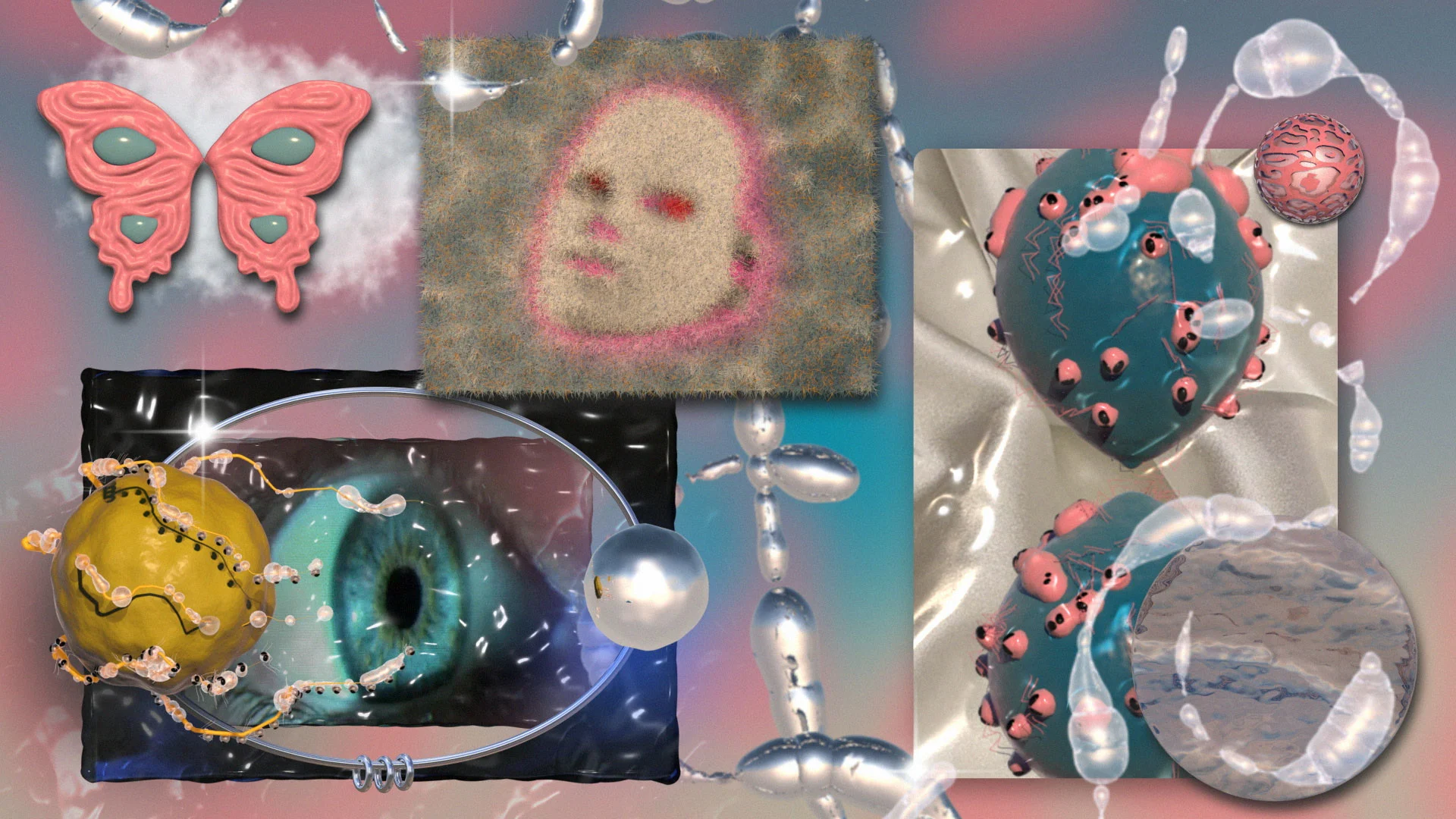
Welcome to the world of Ben Ditto’s third installment of his CLOUDBURST series about modern technology. Enter an eerie organization tasked with carrying people through old age—virtually speaking, anyway. Ditto has questions for us: What is a kind end? What is a moral one? And does it even matter?
I’m recording this from the observation booth. It’s 5am. All of my guys are sleeping well and it’s been a quiet night. Soon it will be time for me to start the morning sequence. I have five clients in my zone currently—sometimes it can be up to seven but five is average and it feels manageable. They come and go. Our longest has been here for about three weeks. At about 6am I’ll power up their exo-suits, they will be raised and cleaned and walked through to the communal area while the night room gets cleaned. I like watching the exo-suits activate and wrap around the tired old limbs; it’s a pleasing contrast of fine new engineering with end-of-life biological matter.
None of mine have their own muscle function, and even if they did, the exos make organization a lot easier. None of them have ever met, even though they’re in the same room 24/7, because their vision is permanently re-routed to their selected metaverse space. I’m watching a group of frail humans being marched to breakfast in self-driving skeletons, but they’re seeing a very different scene. Rolling hills, lakes, blue skies with a few well placed clouds. The temperature is perfect and they are dressed appropriately; not too hot or too cold. They’ll drink their morning coffee looking out over an unspoilt landscape.

No more cost burden on your family, no years and years on antidepressants or antipsychotics while your brain degenerates to mildly charged protoplasm.
It’s expensive but like I said, they don’t stay here for very long; just long enough to make the memories they didn’t have time to produce when their bodies still worked. The state stopped paying for care for the over-70s some time ago after the crash.
Folks—like you—who worked hard for decades can now choose to stay alive until the money runs out, or choose what they are doing and invest in creating the memories they didn’t have time to create while they were physically able…because they were too busy working.
We discovered some time ago that you can bypass the parts of the brain affected by dementia to direct motor control and memory production. It is far more cost effective to stimulate memory growth biologically than to produce them using VFX. Those can be recorded and implanted into your loved ones, no problem. So you buy a package deal; come to the facility, spend some time producing keepsakes for your loved ones, then fade away in what you believe is the great outdoors. No more cost burden on your family, no years and years on antidepressants or antipsychotics while your brain degenerates to mildly charged protoplasm. Everybody’s happy.
We offered a third way: come to us and we will keep them alive long enough to have the end-of-life we all want.
I used to work in the head office before I transferred to this operator role. I worked in sales, speaking to families who didn’t have the resources to keep their parents alive or the stomach for euthanasia but had too much heart to let them rot from neglect. We offered a third way: come to us and we will keep them alive long enough to have the end-of-life we all want. Peaceful, serene, natural. Sit on the side of a hill and watch the sunset. I’ll send the memory to your kids so they can feel how happy you are, they can see what you see and they won’t feel so bad about the imminent day when funding runs out and you get switched off. I think it’s a humane compromise.

Digital memories are closer to the dust that we are made from. Ashes to ashes, dust to dust, silica to silica.
Content, images—they all have weight. We think they are just images on a screen or data but the data has to live somewhere. It lives in the cloud like moisture or memories and thoughts. Individually they are nothing but if you go far away you can perceive them as a singular object. They’re bound together with pressure, whether that’s cranial fluid or atmosphere. They have materiality. Biological memories are chemical records on neurons. Digital memories are transistor states on silicon, sand. They’re both material, they both come from the earth. When you look at it like that, digital memories are closer to the dust that we are made from.
Ashes to ashes, dust to dust, silica to silica. I find the biological memories more miraculous but they’re less resilient. That’s why I feel honored to do this job, being a small part of making something meaningful that endures.





